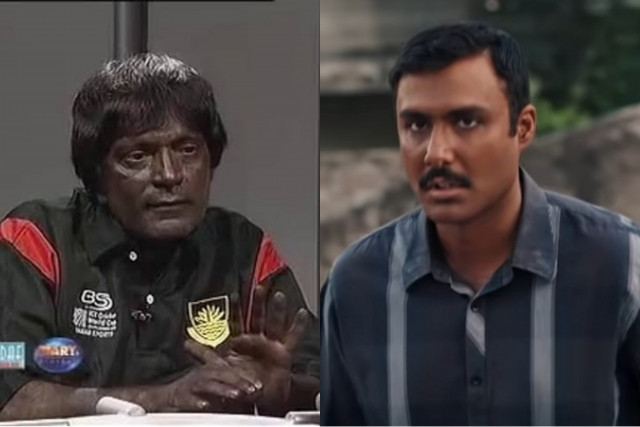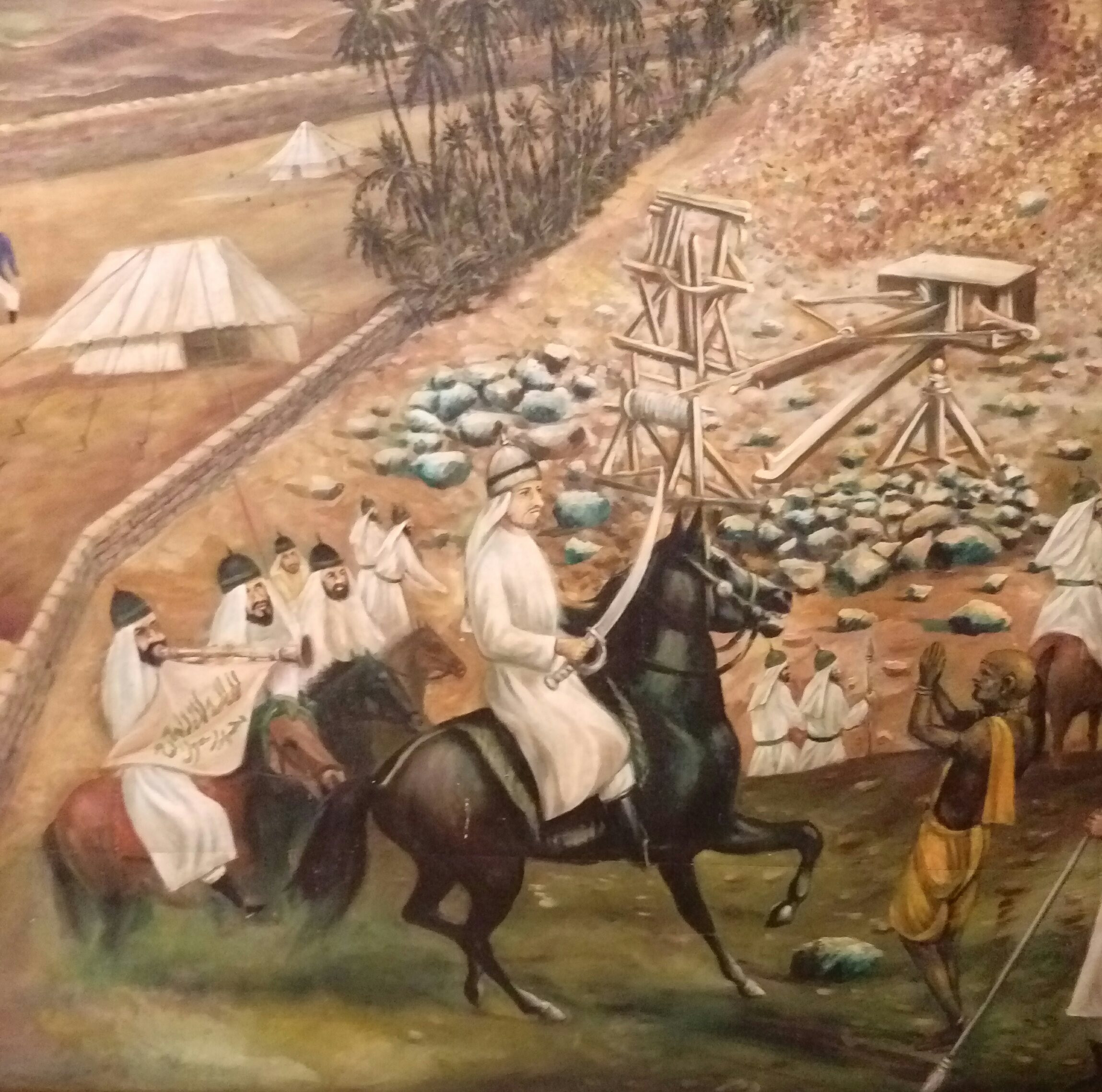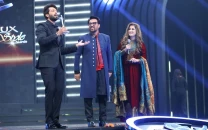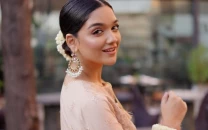Blackface and TV's deeply-rooted colour bias
Part of Pakistan's cultural legacy, colourism continues to permeate throughout the entertainment industry

Layering on makeup three to four shades too dark for the average fair-skinned Pakistani ‘hero’ into the character of a dark-skinned man is not a practice born out of lack. Dark skin is a feature that can hardly be called scarce in Pakistan. And yet, the entertainment industry continues to churn out characters played by actors with purposefully darkened skin, with filmmakers lamenting the dearth of dark-skinned actors to defend their choices. In an era marked by a socio-political awakening in all facets of life, with entertainment at the forefront, one wonders how such blatant ‘blackfacing’ (or, more accurately, ‘brownfacing’) continues to be practised in Pakistan.
Ahmed Ali Akbar, a typical fair-skinned actor, dons dark makeup to play the role of a labourer in his upcoming television serial Parizaad. His portrayal falls in the intersection between class and colour, both of which have a deep and painfully intertwined history in the Subcontinent. At a time when fairness creams are being forced to rebrand due to the harmful stereotypes they perpetuate, Akbar’s portrayal is irresponsible, to say the least, yet it is accepted, often with open arms, by viewers.
While the Parizaad actor’s brownfacing does not carry the same shock value of typical blackface, which constitutes highly exaggerated features for comical value, it is nonetheless equally harmful. Originating in America’s deeply racist past, blackface was the practice of darkening the skin with shoe polish and exaggerating the lips to portray a caricature of the African individual. While blackface may be an American import, it found fertile ground to grow in and thrive in South Asia. India and Pakistan, divided by borders yet united in their prejudice against dark skin.
Bollywood continues the tradition, at least in mainstream cinema, of light-skinned North Indian supremacy by casting only fair-skinned actors, even when it comes to essaying darker roles. From Alia Bhatt in Udta Punjab to Ranveer Singh in Gully Boy, the socio-economic link with dark skin is not lost on the viewer. Playing a lower-caste drug addict to a slum-dweller respectively, both actors have their skin darkened with makeup. Dark skin is worn like a mask, in India and in Pakistan, donned and later discarded when it comes to raking in cash at the time of glamorous promotions, which, of course, are fair-skin exclusive.
A problematic legacy
The Pakistani entertainment industry’s colour-bias stares the consumer squarely in the face. Colourism has been so deeply entrenched in the country’s cultural history that, at this point, it is considered tradition. Perpetuated even by the likes of Anwar Maqsood and the late Moin Akhtar, colourism took a firm hold in Pakistani comedy. Comedian Yasir Hussain, lacking in humour yet chock full of controversy, blames the criticism he receives on people not being able to take a ‘joke’ anymore. In a 2020 interview, Hussain attempted to explain the roots of his prejudiced comedy. "The comedy we have grown up with included the works of Moin Akhtar, Anwer Maqsood, and Umer Sharif. If you look at Umer Sharif's jokes a lot of times they were about women's make-up, ‘shemales’ in airlines etc. You may not agree with it but we and the public at large have grown up with such humour," he shared.
Anwar Maqsood and Moin Akhtar’s Loose Talk is often considered the pinnacle of Pakistani comedy and minus the regressive stuff, it actually is. While Akhtar’s comedic timing and delivery deserve the praise they receive, his portrayal of Sri Lankan and Bangladeshi characters in full blackface can not be excused, especially in this day and age.
Maqsood’s racial and ethnic prejudice often permeates his work, whether it be the portrayal of a Bengali servant named Mujeeb, complete with blackface in his play Kyun Nikala or his perpetuation of harmful stereotypes against ethnic groups like Sindhis (in collaboration with none other than Yasir Hussain).
The question of race
An important thing to understand here is that colourism is not devoid of racial connotations, a fact that can clearly be observed in Akhtar’s portrayals. Harking back to the concept of martial races, originating in British India after the events of 1857, lighter-skinned Punjabis, Sikhs and Pathans (who fought with the British) were deemed superior. Darker-skinned Bengalis, who were part of the revolt, were deemed inferior.
The propaganda painted the Bengali as effeminate and lacking in bravery and strength, while the Pathan embodied masculinity and courage. The racial bias and resulting colourism are thoroughly imbued in Pakistan’s socio-cultural past and present. A detail in a painting housed in Pakistan’s Maritime Museum features a host of light-skinned, sword-wielding Arabs on horseback, with a dark-skinned, saffron-clad man on his knees begging for mercy. The painting is titled “The History of the Subcontinent Through the Ages”.

DEEPLY ROOTED: Detail of a painting titled ‘The History of the Subcontinent Through the Ages’ on display at Pakistan Maritime Museum in Karachi
The existence of problematic ‘classics’ can’t be denied, and in fact, is grappled with daily on the stage of global culture. Loose Talk, with its caricatures and stereotypes, was a product of its time and one that cannot be allowed to find firm footing in the current socio-cultural scene. Hussain, and other comedians who identify with his views, often call out critics for not appreciating ‘satire’, yet the meaning of satire may be completely lost on these comedians in the first place. A political tool in the arsenal of an oppressed population, satire depends entirely on power dynamics.
Money matters
Why practices such as blackface remain rampant may be linked to the fact that entertainment industry executives are lacking in more than a few brain cells, but these are shrewd businessmen, so the explanation remains unlikely. The money-making nature of the game leads one to the conclusion that these are deliberate choices. Whether for social media frenzy to generate higher viewership, since controversy sells, or to satisfy the viewers’ own internalised colour-bias, again for higher viewership, the numbers (and the cash they rake in) seem to reign supreme.
Prominent screenwriter Bee Gul, in an interview with The Express Tribune, lamented the cash-grabbing nature of the entertainment industry. “What we have playing on TV is commercialised content without an ounce of quality or for that matter, responsibility,” she shared. Moral responsibility takes a backseat when it comes to lining pockets, with industry executives, whether it be fashion, TV, or film, ready to don any colour, culture or creed to see the coveted upward trend on their charts.



















COMMENTS
Comments are moderated and generally will be posted if they are on-topic and not abusive.
For more information, please see our Comments FAQ